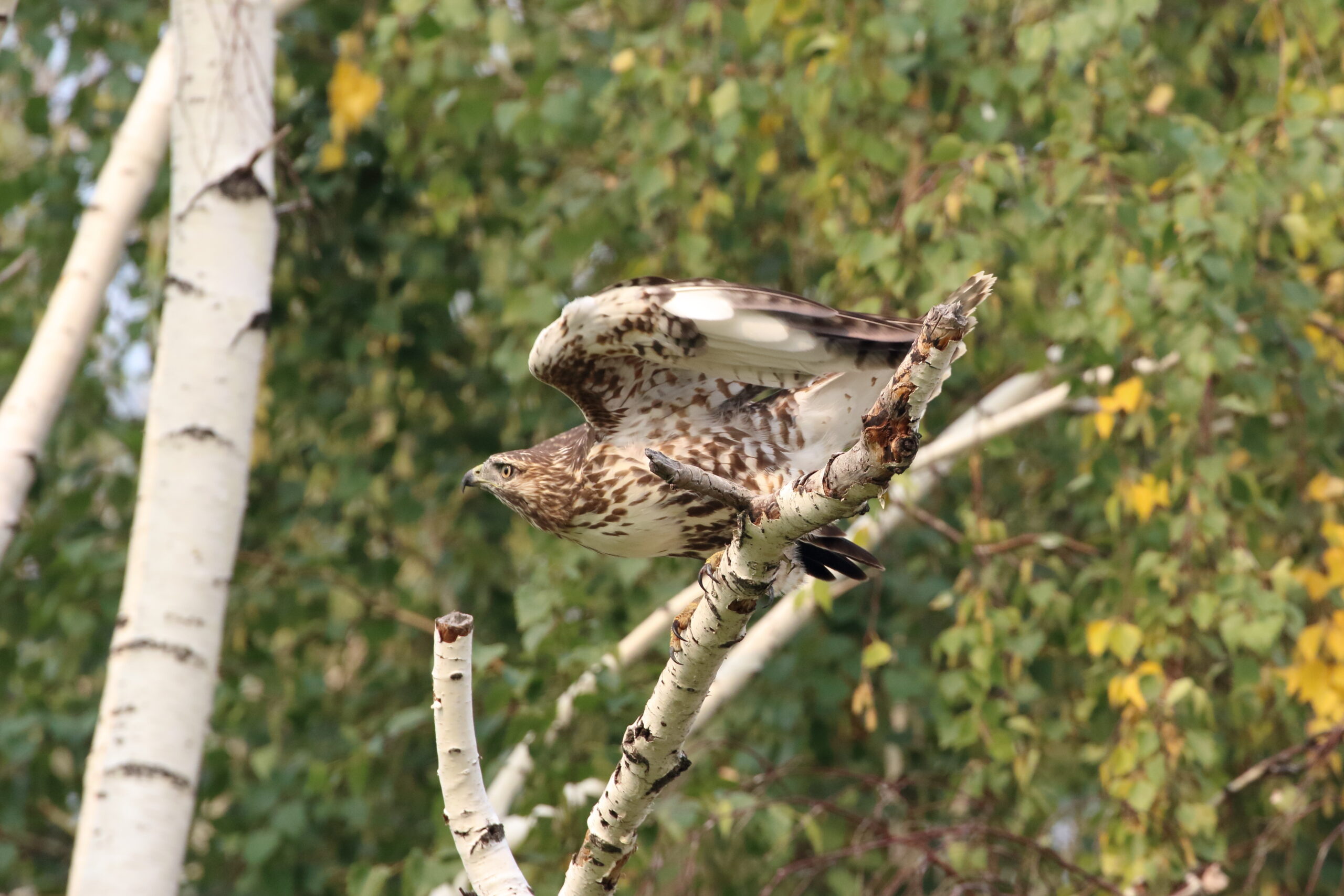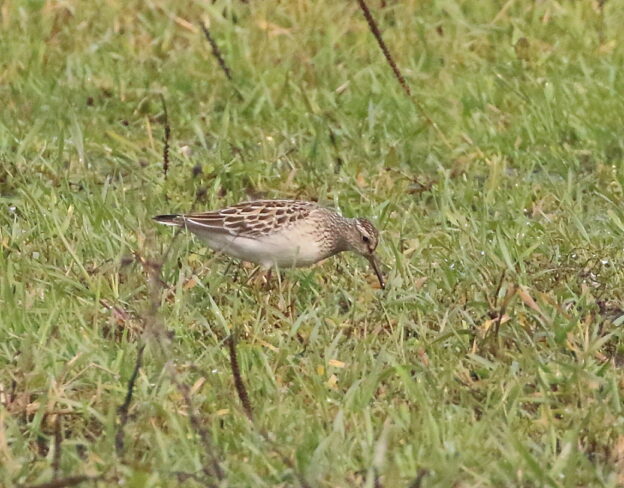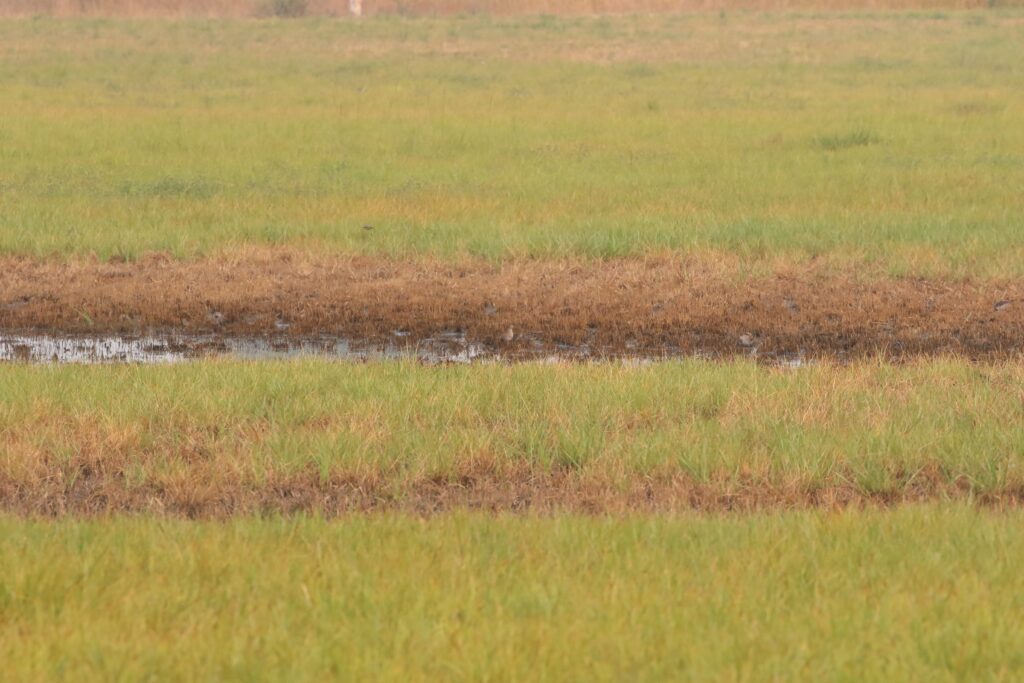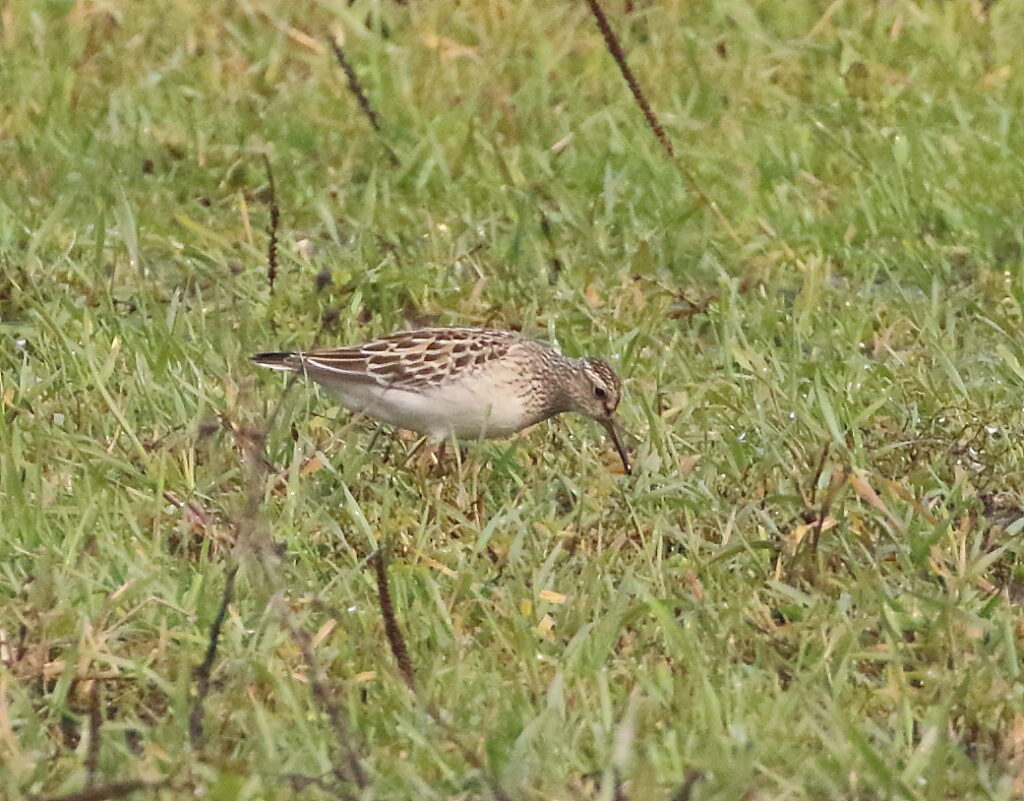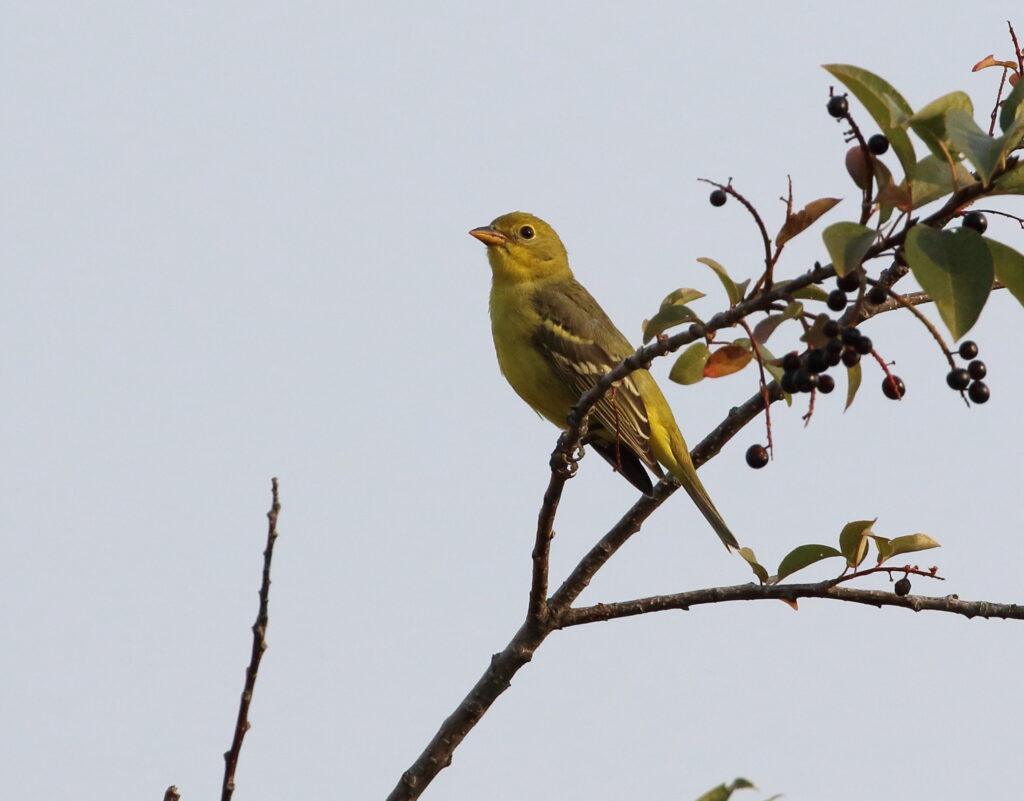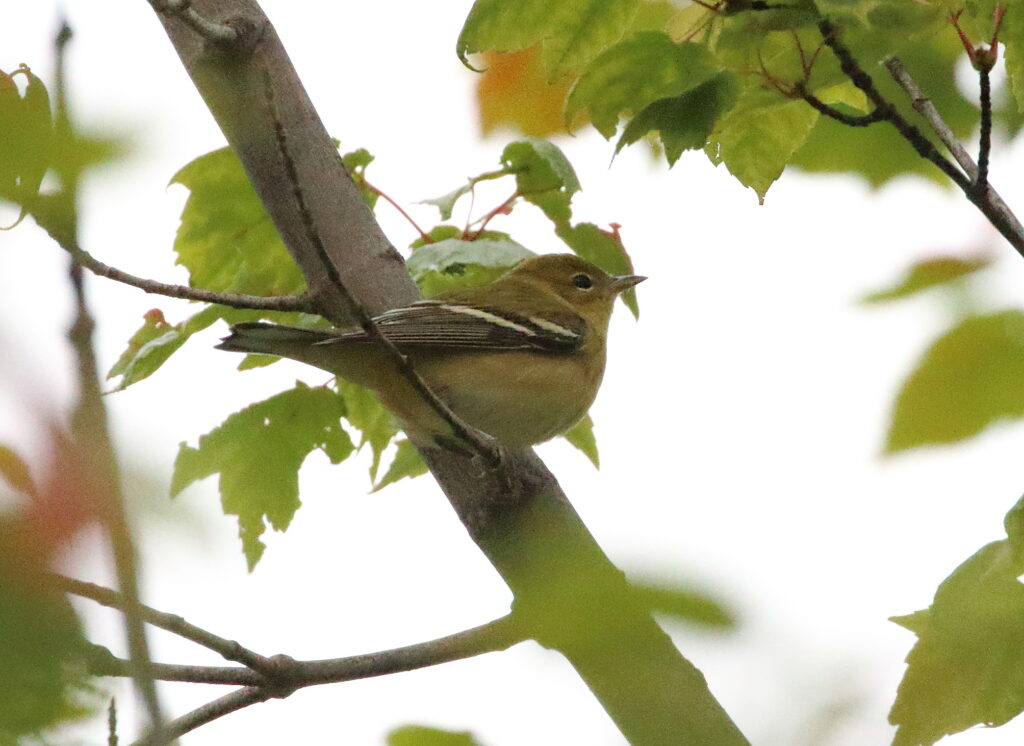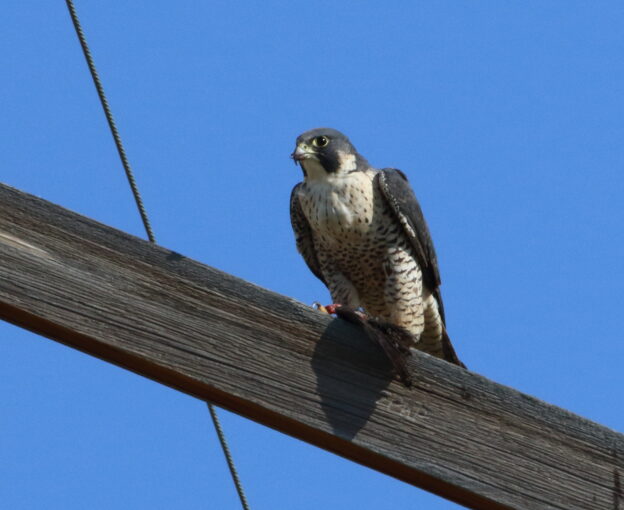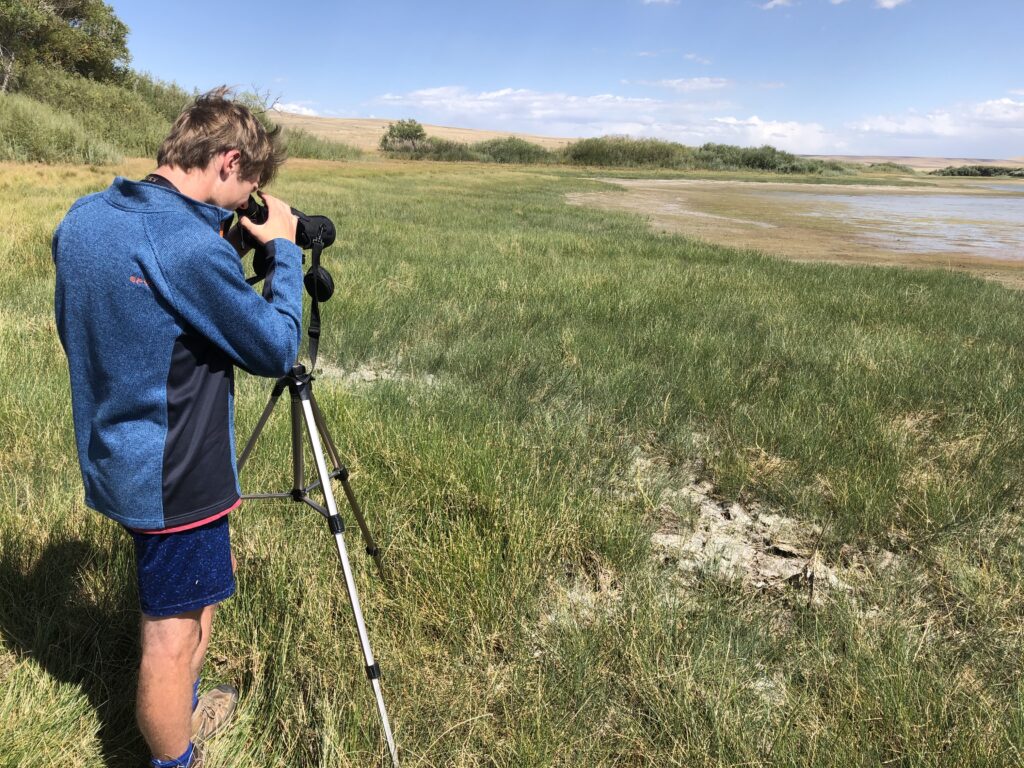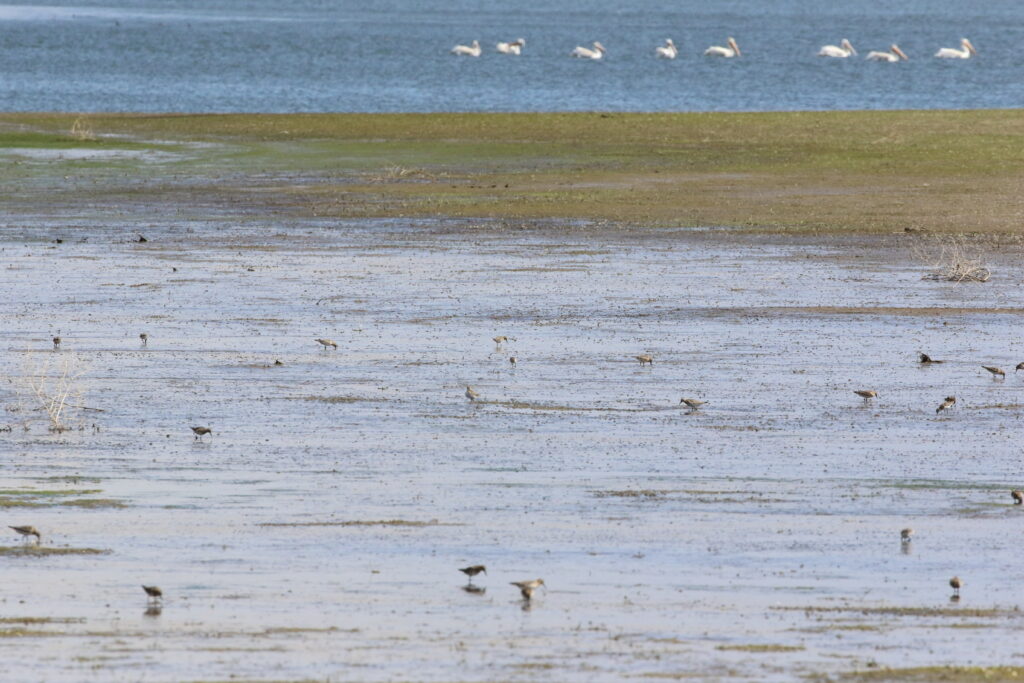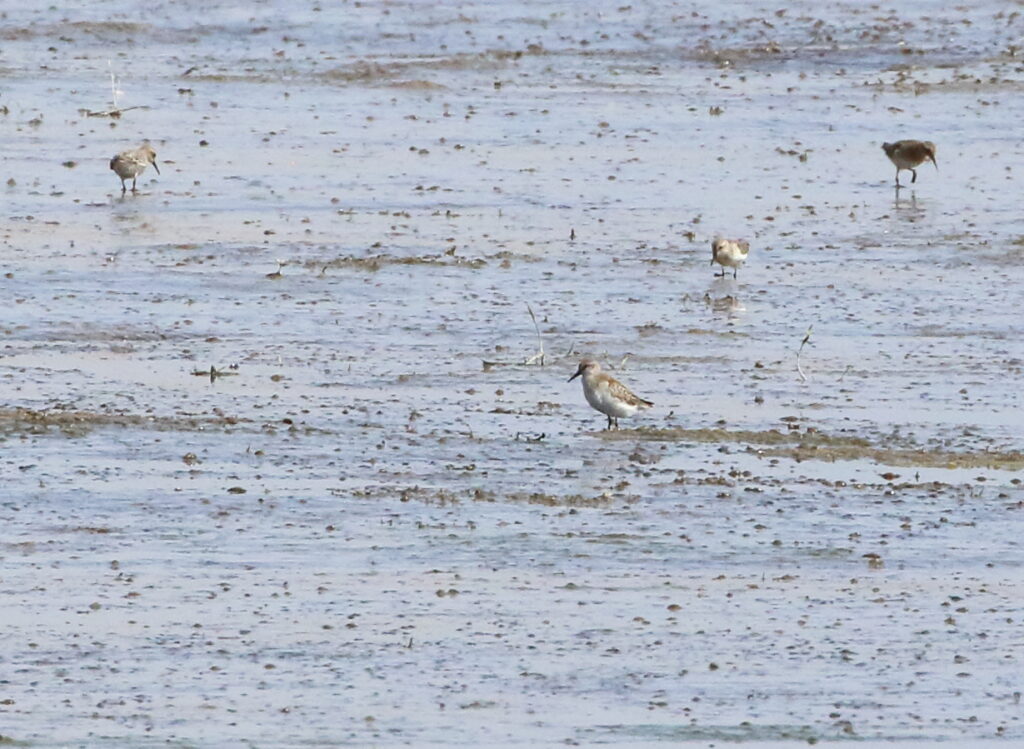The sun was still asleep as the Collard minivan circled the roundabout, turning off on the road leading to MPG Ranch. Thirteen months ago, we had had our first banding experience with the University of Montana Bird Ecology Lab on Upper Miller Creek road, and now we were back for more—Erick Greene, a UM professor working with my dad on an article, had invited us to join the Ranch team. We pulled up to the gate, and soon enough the banders arrived. We followed them through the gate and onto MPG Ranch, a place neither my dad nor I had been in at least two years. A brand new sign pointed directions to familiar places, and we followed the truck towards the Orchard House, where Nick Ramsey and I had spent many days watching the feeder birds. We passed the Duck Mahal, a seasonally-flooded building, located adjacent to a slough that provided habitat for the first Bullock’s Orioles, Gray Catbirds, Wood Ducks and Red-naped Sapsucker I had ever seen.

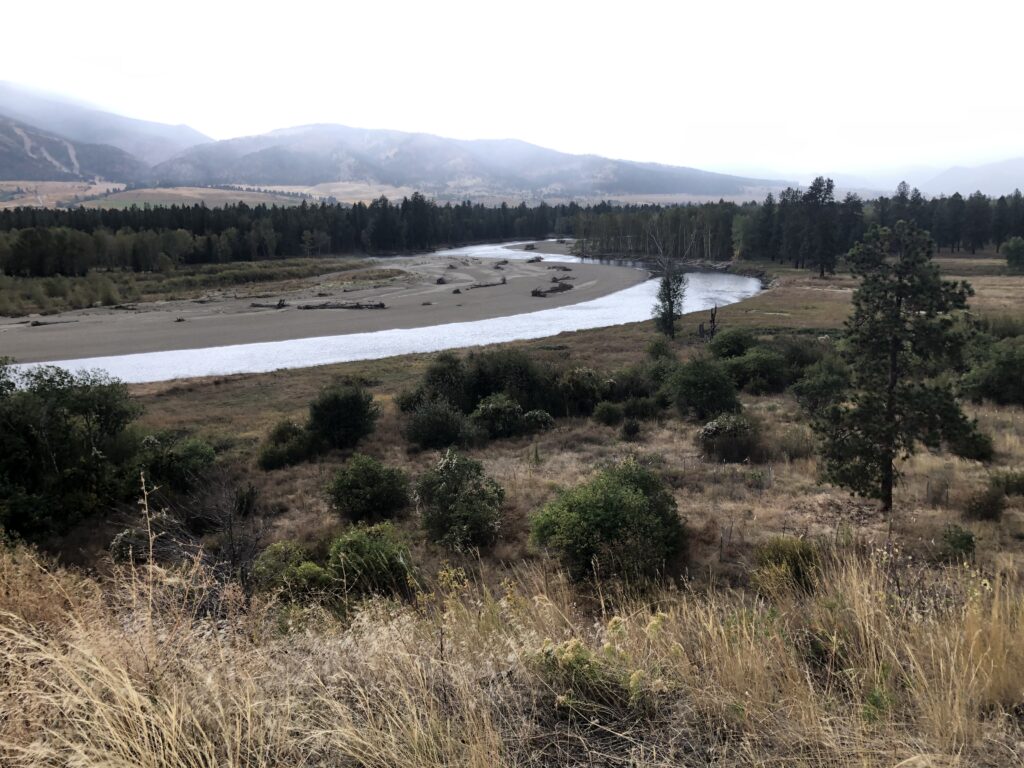
The vehicles parked in a lot north of the Duck Mahal, and from there we followed Mike, the lead bander, down into a shrubby riparian area. The rising sun brought with it constant gusts of wind, and the gray sky threatened us with rain.
“Well,” said Mike, “It looks like we won’t be banding for a while, so why not go birding?”
As we walked around the floodplain, we learned about what projects UMBEL and each of the individual banders and students were working on. The birds, for the most part, were completely hunkered down, and most of the songbirds we recorded as flyovers. One group of birds was out in full force, however; it was peak raptor migration.
Pairs of Red-tailed Hawks performed acrobatics in the sky as the wind sprinkled rain around us. A golden-bellied female Northern Harrier passed right in front of us as we scanned the brush for warblers, and several accipiters made close passes (including one that sat on a bare log that we puzzled over for several minutes).

The weather did not lighten, and so, for the safety of the birds, the banding session closed before it opened. My dad and I, still thirsty for species, said our thanks and drove back across MPG’s windswept plain towards another old friend: Lee Metcalf National Wildlife Refuge.
What we discovered upon arriving at the main ponds by the Refuge visitor center is that the season of brown, unidentifiable ducks was wrapping up, and the open water produced great looks at breeding-plumaged American Wigeon, Northern Pintail and Gadwall alongside prehistoric white pelicans. We hadn’t seen this much waterfowl in a long time, yet, again, our eyes turned to the sky. Raptors continued to stream over the Bitterroot Valley, and we studied each Red-tailed carefully, hoping to spot a Broad-winged Hawk, a rare but regular migrant this time of year. No Broad-wingeds appeared, but rafts of Turkey Vultures did. On our way out of the refuge, we spotted yet another raptor, one we had just begun to get familiar with: a crisply-patterned Peregrine devouring a blackbird on a fencepost.
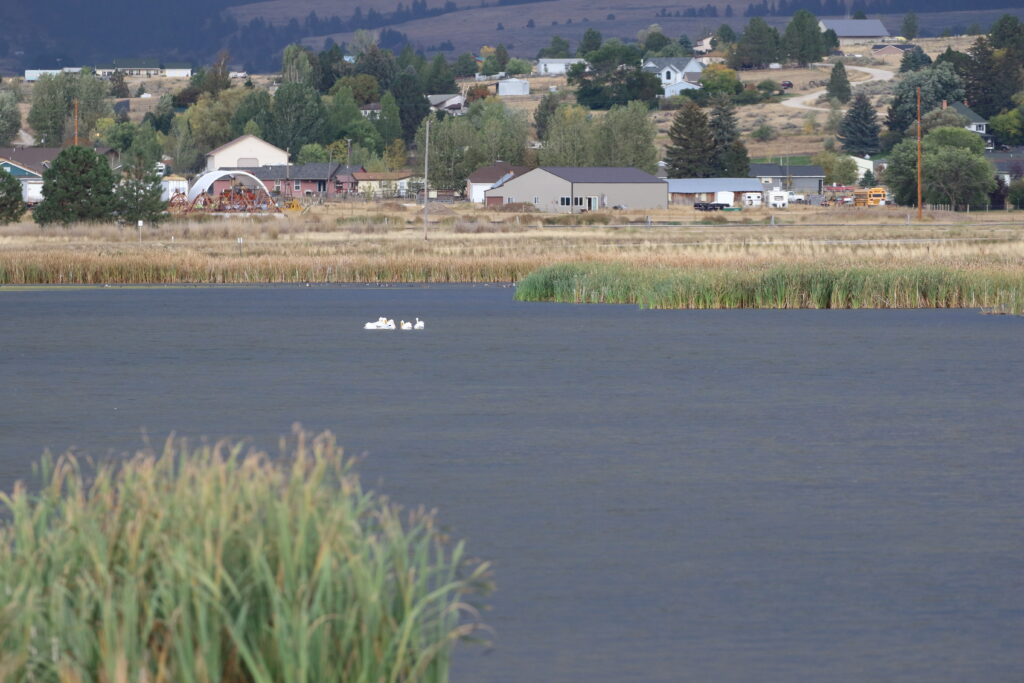
Next, my dad and I headed to Kootenai Creek Road—not the road leading to the trailhead, but the one I’d accidentally driven earlier this summer. Why? California Quail, an introduced resident of the Bitterroot Valley, had been abundant the last time I’d been here, and this was the first time my dad had gotten his butt down here to add them to his year list. Nabbing quail was a necessity. Thankfully, we spied a lone male on our way back down the road, adding another year bird to at least one of our lists after a two-week drought.

Finally, we hit the Fort Missoula Gravel Quarry, a birding classic, before heading home. Upon entry, we were hit with a large flock of robins feeding on berries, and soon began pulling other species from the flock. Butterbutts (Yellow-rumped Warblers) flycaught above leaf-gleaning Orange-crowned Warblers, and we spotted a pair of Cassin’s Vireos, adorned in yellow vests and white eyeglasses. As we made our way towards the water, I heard a high, metallic “chip” coming from a bush behind us. After about a half hour of pishing, using playback and circling the bush multiple times, an adult “tan-striped” White-throated Sparrow popped into view for a second, adding another species to my dad’s year list (I’d found one at the Rocky Mountain Elk Foundation a few weeks prior). Like at MPG and Lee Metcalf, raptor silhouettes lined the horizon, and we continued scouring the sky for Broad-wingeds. Unfortunately, we didn’t find any, but there would be other days.
On the way home we hit another old favorite: Taco Bell. It had been a day of new experiences and old memories. We had no choice but to feel fulfilled.

